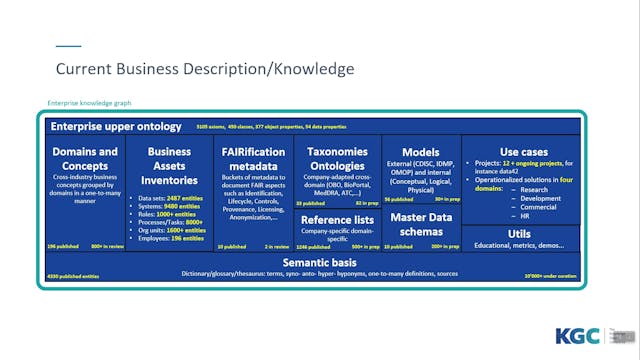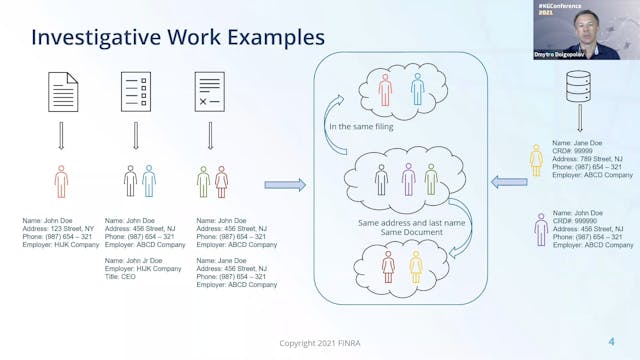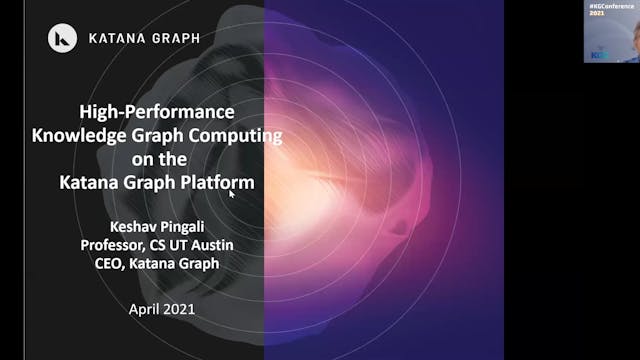Alex Kalinowski | Structured To Unstructured & Back: Integrated KG and NLP
KGC 2021
•
21m
Identification of entities and the relations between them is a difficult task for traditional pattern-based matching or machine learning approaches; these techniques rapidly overfit training datasets and struggle to transfer to other contexts or domains. Utilizing outside knowledge, such as facts contained in a knowledge base or ontology, seems to be a solution to the lack of transferability. However, integrating unstructured text data and language models with highly structured resources such as knowledge bases is a challenging research problem. Using concepts from distant supervision, word vectors and knowledge graph embeddings, an elegant unsupervised learning approach will be presented for solving this knowledge integration problem. This talk is to view the problem from both points-of-view: the natural language processing practitioner unaccustomed to semantics and knowledge bases, and the semantic web developer without a background in deep learning and language models.
Revised Description:
It is a difficult task for traditional pattern-based matching or machine learning approaches to identify entities and the relationships they share. These techniques rapidly overfit training datasets and struggle to transfer to other contexts or domains. One solution to the lack of transferability includes the utilization of outside knowledge, such as facts contained in a knowledge base or ontology. However, integrating unstructured data such as language models with highly structured data such as knowledge bases is a challenging research problem.
Using concepts from distant supervision, word vectors, and knowledge graph embeddings, an elegant unsupervised learning approach will be presented for solving this knowledge integration problem. This talk illustrates the problem from two points-of-view: the natural language processing practitioner unaccustomed to semantics and knowledge bases, and the semantic web developer without a background in deep learning and language models.
Alexander Kalinoski works on tasks as a knowledge graph engineer at Wells Fargo Bank. This video provides his insight on where users are to identify elements in a collection of unstructured data and tackling it in one way or another may leave a lot to be desired, but Kalinoski believes they can tackle it from different directions simultaneously. Kalinoski provides use cases where his solution can lead to the verification of ontology, decrease in cost and time and help identify gaps in graphs.
#knowledgegraphs #knowledgegraphconference #knowledgegraphschema #knowledgegraphandbigdataprocessing
Up Next in KGC 2021
-
Cedric Berger | Data Governance 4.0 A...
Driven by legacy paper-based approaches, the design, conduction and analysis of clinical studies requires the creation and transformation of many data in many different formats. This hinders the process and necessitates significant resources. Having metadata-driven transformation is not new, howe...
-
Chen Zhang & Dmytro Dolgopolov | Enti...
During the presentation, we will share our experience in building a knowledge graph leveraging Spark, NLP, and Machine Learning. We will start with explaining the business problems and challenges. Then walk through our data pipeline, including text analytics processes, name similarity solutions, ...
-
Keshav Pingali | High Performance Kno...
Knowledge Graphs now power many applications across diverse industries such as FinTech, Pharma and Manufacturing. Data volumes are growing at a staggering rate, and graphs with hundreds of billions edges are not uncommon. Computations on such data sets include querying, analytics, pattern mining,...



